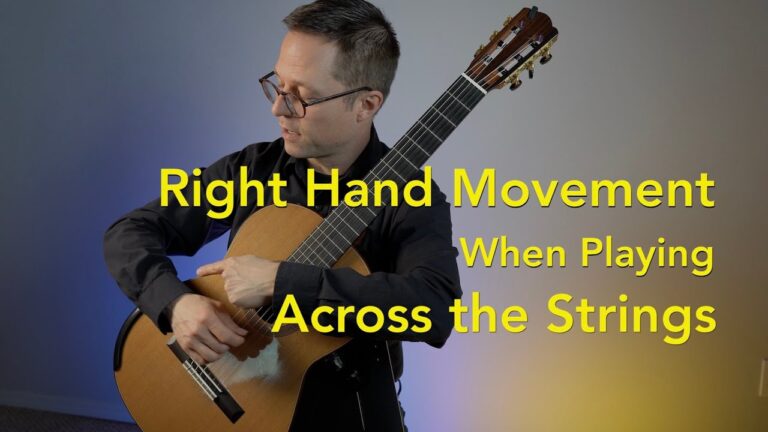Study No.15, Op.35 by Fernando Sor (1778 – 1839). PDF sheet music and free lesson video for classical guitar. This performance and lesson comes from my book Classical Guitar Repertoire Lessons Grade 6 – Five pieces at the grade six level with dedicated lessons preparing you for each piece.
This is an excellent study for playing the intervals of 3rds and 6ths as there are completely intact one octave scales in 3rds and 6ths. It also is a model Small Ternary Form with symmetrical four bar phrases. In the lesson I cover some intervalic scales, the grace notes, discuss the form of the piece, and then do a walk-through of the work. Here’s the YouTube link if you want to watch it there.
Jump to a section: Intro (1:02), Scales (3:27), Grace Notes (7:16), Form (8:48) Walk-Through (13:36).
Symmetrical Four Bar Phrasing and Form – Classical era music often emphasizes balance and symmetry. This study by Sor, for example, is entirely made up of four bar phrases. The form of this piece can be analyzed as a Small Ternary Form. This form has three thematic sections: exposition (A), contrasting middle (B), and recapitulation (A). The form of a piece affects the psychology of the music and the possible interpretation by a performer. The exposition (A) introduces the theme in the home key but does not end with a feeling of finality. The contrasting middle section (B) introduces a contrasting theme in a different key. The recapitulation (A) repeats the main theme but ends with a cadence that feels conclusive. A simple story analogy could read as: the A section is the start of a character’s journey from home, the B section is an adventure away from home, and the final A section is the character’s return home with a conclusive ending.
Note: There are a number of inconsistencies in the bass voice of this work which are either errors or oddities. I’ve decided to repair and rewrite a few bars to add continuity and consistency to the bass voice. For example, in the original Bar 20, there are no bass notes on the second beat despite the rest of the work always containing the two eighth notes. Another spot is Bar 15 where the original has a quarter note bass on the first beat, a strange ink blotch on the second beat bass, and an eighth note rest at the end of the bar. Editors have either kept the score as the original or rewritten these areas and attributed the confusion to copy errors in the original publication. You might find small changes if you look at various editions of the work.




